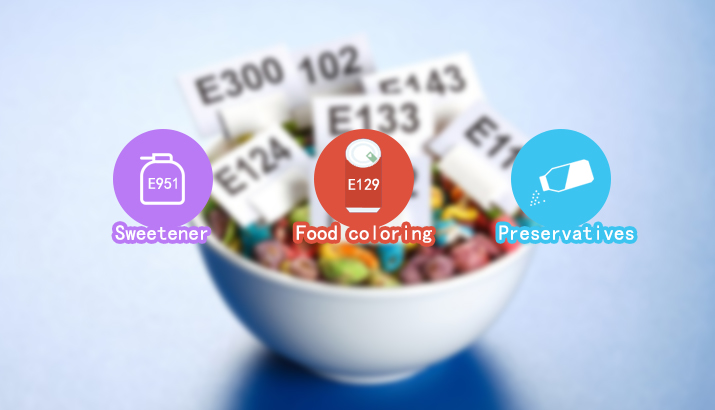


Global Foodmate shared the summaries of use and management of food additives in Japan, the European Union and the Eurasian Economic Unionin during the last three sessions. This time, we lead you into the United States to see how the United States manages its own food additives.
I. Regulation of food additives in the United States
The United States management models on food additives and coloring agents are separated. At present, the U.S. management of food additives and food coloring agents is relatively strict. When the new food additives or coloring agents access in the market or when the approved substances will be used in unapproved food, companies firstly need to apply to the Food and Drug Administration (hereinafter referred to as "FDA") for approval. If the substance is approved, the FDA will issue regulations that may include the types of foods that can be used, the maximum amount that can be added, and how the substance should be labeled on the food.
Unlike food additive management, all coloring agents approved by the FDA can be divided into two categories according to whether they require certification: coloring agents that require certification and coloring agents that are exempt from certification. The coloring agents requiring certification are synthetic (or man-made) and analyzed by the FDA chemist on the batch of samples proving that the sample meets the composition and purity requirements specified in the colorant regulations. FDA will issue a certificate which identifies the coloring agents, the batch weight, the use of the certified coloring agents, the name and address of the owner and other required information for the batch of the certified coloring agents. There are nine types of certified coloring agents approved for use in the U.S., such as FD&C Blue No. 1, etc.
II. the United States food additive types
U.S. food additives are divided into direct food additives, secondary direct food additives, indirect food additives.
Direct food additives include preservatives, anti-caking agents, special dietary and nutritional fortification, spices and related substances, multifunctional additives, etc.
Secondary direct food additives are food additives added during the production and processing of food, but does not play a functional role in the end product, including polymer and polymer additives for food processing, enzyme preparations and microorganisms, solvents, lubricants, specific purpose additives.
Indirect food additives are food additives that are not added directly, but through migration into the food, such as food packaging materials substances.
coloring agents are dyes, pigments or other substances that are able to colour food, drugs, cosmetics, including coloring agents exempt from certification and coloring agents need certification.
According to the definition of food additives in the United States, food additives include processing aids, nutritional fortification substances, flavorings and fragrances, gum base, gum base agent-related substances. In addition, food ingredients and food contact packaging materials that can migrate into the food is also part of the food additive, which makes the United States definition differ from the definition of food additives in other countries.

III. The use of food additives in the United States
U.S. FDA demands that substances added to food should be in accordance with the food additive regulations (21 CFR Part 172 and 21 CFR Part 173), color regulations (21 CFR Part 70, 21 CFR Part 71, 21 CFR Part 73, 21 CFR Part 74, 21 CFR Part 80 and 21 CFR Part 82 ) or Generally Recognized As Safe Substances (GRAS) requirements for use. Generally Recognized As Safe Substances (GRAS) mainly in the U.S. federal regulations 21 CFR Part 182, 21 CFR Part 184 and 21 CFR Part 186, prior approval of substances, mainly in 21 CFR Part 181. In addition,the U.S. has established prohibited additives, mainly in 21 CFR Part 189.
The United States does not have a list of all available food additives for each category, but for each specific food additive to specify its scope of use and use requirements. So in order to determine if the use of a food additive is in food compliance, we should first clarify the basic characteristics of the ingredients and processing process of the product, and then query the specific requirements of each additive to be used, and then determine whether the use of food additives complies or not.
IV. The U.S. food additive labeling
U.S. food additive labeling needs to comply with the U.S. federal regulations 21 CFR Part 101. Additives shall be marked in decreasing order during the manufacture or processing of food on the ingredients list; additives added in amounts not exceeding 2% may not be listed in decreasing order.
Specific or common names should be used for each additive, rather than a generic (class) or general name.
In addition to the common name, preservatives need to be stated their functions separately, such as "spoilage prevention," "mold inhibitor," and "color retention". There are four types of food additives identified by category name and specific name: leavening agents, yeast nutrients, dough improvers, and coagulants.
Need help or have a question?
Send mail